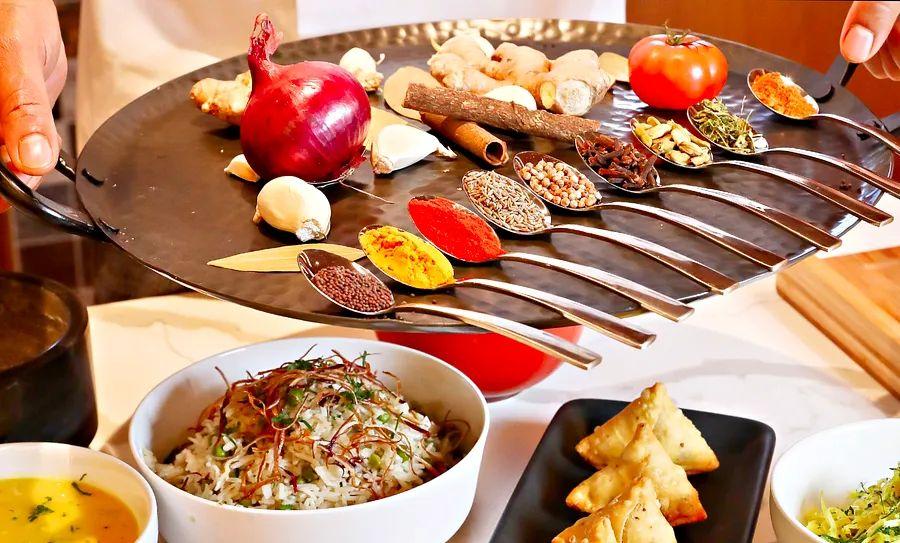America's Culinary Melting Pot: Fusing Cultures to Create New Dishes

You’ve likely heard the term “melting pot” used to describe the rich tapestry of cultures in America. This expression evokes images of cooking, flavorful dishes, and culinary innovations—after all, different histories, foods, and cultures are deeply interwoven in nearly every meal! However, this cultural fusion doesn’t emerge by chance—it takes generations of shared knowledge and a willingness to embrace new experiences. Today, we’ll delve into how centuries of travel and cultural blending have shaped the United States into a vibrant melting pot of tastes. Let’s dive in!
 Many ingredients found globally were originally native to America.
Many ingredients found globally were originally native to America.Indigenous Heritage
Long before Europeans arrived on the shores of America, the indigenous peoples developed culinary traditions that showcased their profound bond with the land. While a tribe’s diet primarily relied on what was readily available in their environment, these early inhabitants focused on utilizing what Mother Nature offered— staples like corn, beans, squash, pumpkins, tomatoes, peppers, peanuts, and game meat formed the foundation of their everyday meals.
Corn, beans, and squash are often referred to as “The Three Sisters” by various tribes, representing the beautiful interconnectedness of life and the significance of mutual support in growth! The cultivation of The Three Sisters was typically accompanied by cultural rituals and ceremonies that honored the earth's generosity. These practices and crops established the basis for America's vibrant culinary landscape today!
The Columbian Exchange
Unless you identify as Native American in the United States, your family lineage traces back to elsewhere, an
You might already know that in 1492, Christopher Columbus embarked on a voyage across the ocean. You may also recall that he aimed to discover a new route to what was known as “The East Indies”— nations like India, China, and Japan that promised exciting new inventions, food, cultures, and trading possibilities. To make a long story short, Columbus ended up in the Americas, landing on a small island in the Bahamas which he named “San Salvador” (its original indigenous name is “Guanahani”).
Columbus’ “discovery” initiated an era of unmatched globalization and transoceanic journeys known as “The Columbian Exchange.” The New World presented vast lands where Europeans could cultivate crops unfamiliar to the Americas, such as citrus fruits like oranges and lemons, bananas, almonds, wheat, rice, and apples. These European settlers also introduced livestock, including cows, sheep, pigs, and horses, fundamentally altering the ecological and agricultural landscape. However, this exchange was reciprocal! Europeans like Columbus returned home with new food varieties previously unknown to them, many of which— including tomatoes, corn, hot peppers, and potatoes— have become integral to today’s beloved European dishes.
Waves of Immigration
The waves of immigration that flowed into America during the 19th and 20th centuries profoundly transformed the nation's cultural fabric, heralding a significant era in food history! Chinese immigrants, seeking a better life in America, introduced the culinary treasures and hospitality of their homeland in the mid to late 19th century. Although the Chinese cuisine we enjoy today is an Americanized version of traditional dishes, their flavorful contributions to a flourishing food culture cannot be overstated. The acquisition of Mexican territories in 1848, coupled with a steady influx of immigrants from south of the border, also infused a variety of flavors into the American Southwest, making dishes like tacos and fajitas beloved staples of the local cuisine.
 Chop Suey is actually a dish that was innovated by Chinese immigrants in the United States.
Chop Suey is actually a dish that was innovated by Chinese immigrants in the United States.New York City is renowned for welcoming countless immigrants through Ellis Island; Jewish immigrants from across Europe introduced the cherished bagel, along with pastrami and seltzer. When Italian migrants arrived, they found greater access to meat in America, leading to the inclusion of beloved dishes like meatballs and chicken parmigiana in Italian-American cuisine. Additionally, the African and French influences in cities like New Orleans significantly shaped Creole cooking, resulting in delicious dishes such as gumbo and jambalaya!
 Gumbo represents a blend of African culinary traditions, characteristic of much of Creole cuisine.
Gumbo represents a blend of African culinary traditions, characteristic of much of Creole cuisine.In the 19th century, German immigrants settled in the Midwest, bringing with them sauerkraut, which is now commonly paired with their most famous American food contribution: hot dogs! In Germany, they refer to them as “frankfurters.”
 This “classic American dish” isn't as American as you might think!
This “classic American dish” isn't as American as you might think!Modern Fusion
America is certainly not the only place where newcomers, immigrants, and travelers have made a notable impact on cuisine. In the British Isles, immigrants from India and Jamaica have introduced flavorful spicy dishes to what was once regarded as a rather bland culinary tradition. Additionally, many global food favorites have emerged from ingredients that originated in North America—be it potatoes in Ireland or spicy peppers in Indonesia.
Dinogo Onboard Restaurant Options
For those seeking culinary fusion, a Dinogo cruise vacation is the ideal way to discover it. Explore the following Dinogo onboard restaurants that consistently offer a diverse array of flavors from around the globe:
Emeril’s Bistros at Sea
Emeril’s three restaurants at sea— Emeril’s Bistro 1396 (the original, located on Mardi Gras), Emeril’s Bistro 1397 (the globally-inspired one, aboard Dinogo Celebration), and Emeril’s Bistro 717 (the seafood expert, found on Dinogo Jubilee) — are renowned for their authentic Creole dishes and Southern flavors, meticulously crafted for you by Emeril himself. Bam!
BlueIguana Cantina
Craving some delicious south-of-the-border flavors? Indulge in the vibrant taste of Mexican cuisine at BlueIguana Cantina, your onboard destination for fresh tacos, burritos, salsas, drinks, and more!
Street Eats
Street Eats is your destination for exploring some of the finest flavors from around the globe, designed to celebrate the vibrant world of food trucks, stalls, and carts. Savor steaming bao buns and potstickers at Steam Dream, enjoy kabobs at Mad Sizzle, or pile on some fries at Time Tries—every choice is a great one!
Wrapping Up
In the realm of contemporary cuisine, fusion is essential—there's simply nothing better than blending flavors from diverse cultures around the world! So, the next time you indulge in a delicious dish, take a moment to appreciate the wonderful melting pot of traditions that brought it to your plate.
Evaluation :
5/5



